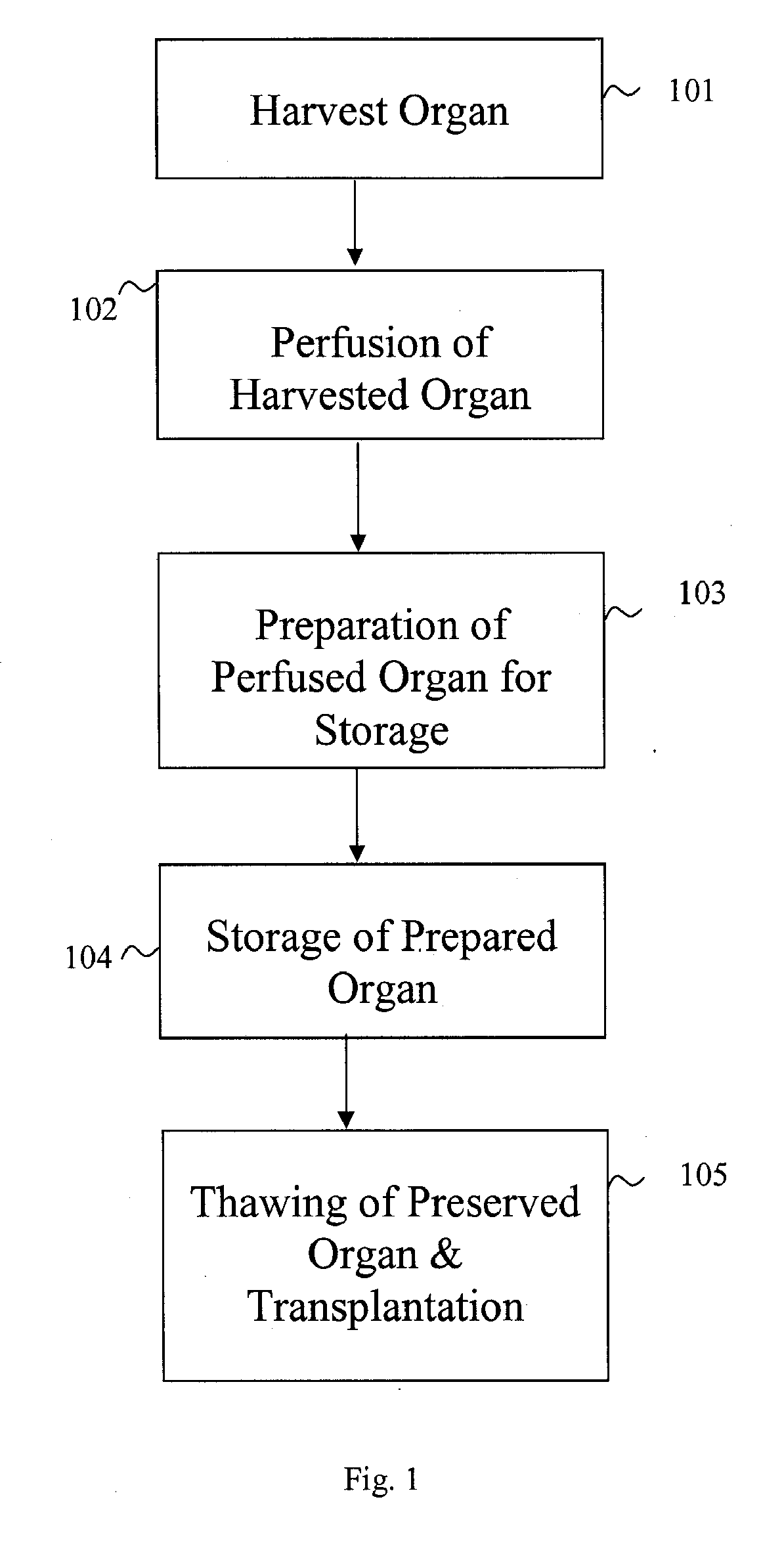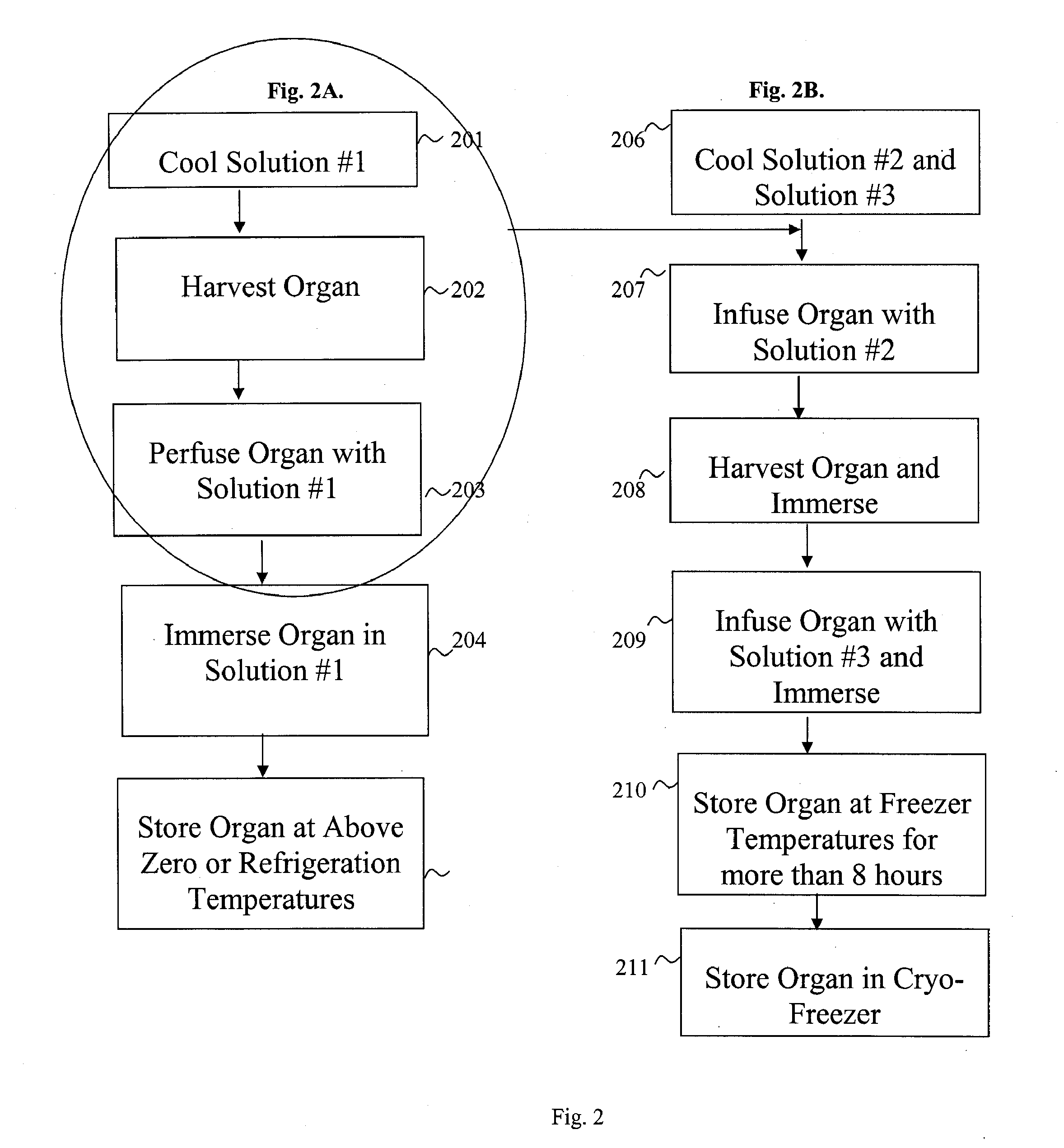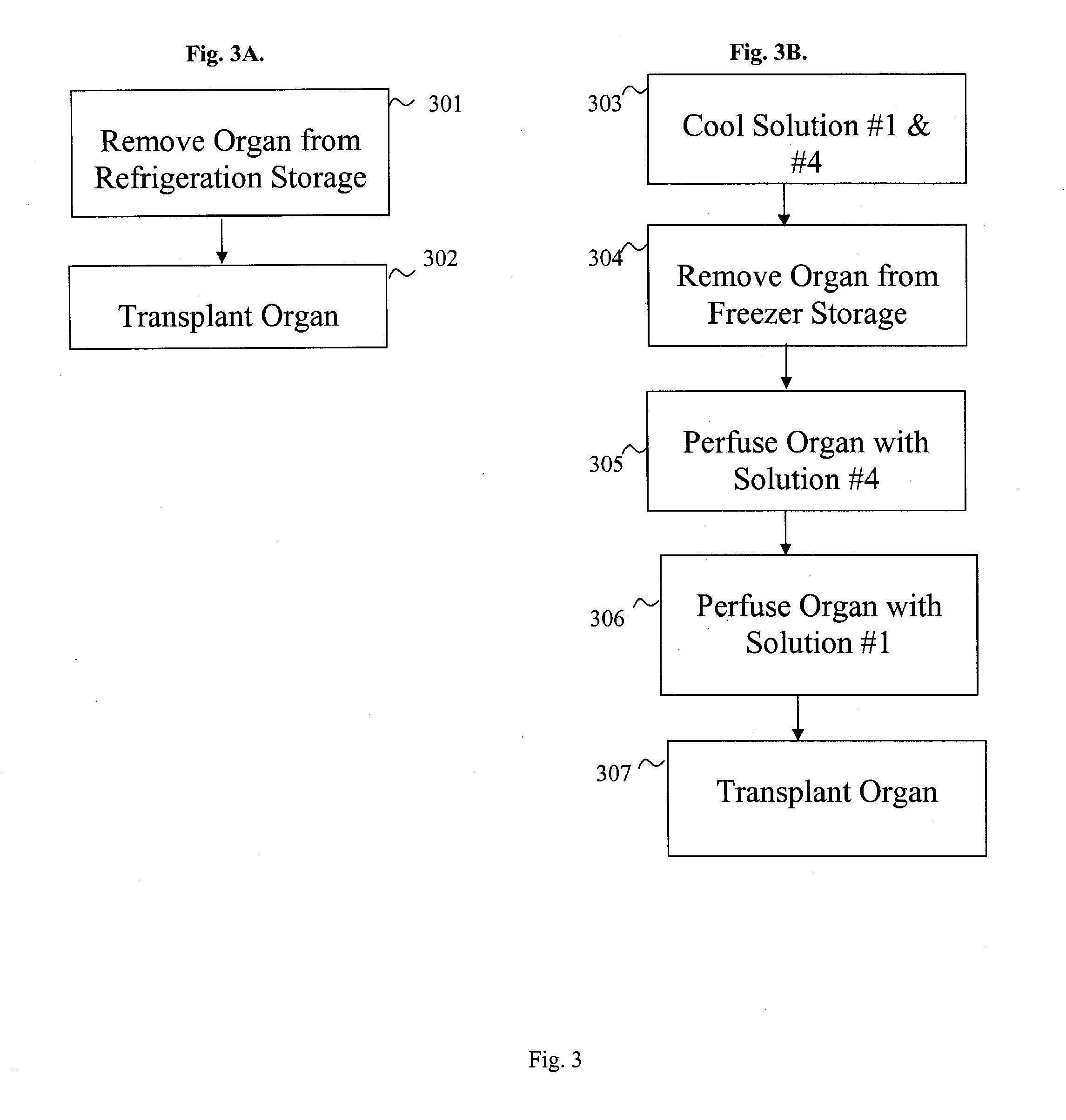Methods And Solutions For Storing Donor Organs
a donor organ and organ technology, applied in the field of organ storage systems, can solve the problems of reducing the ability to generate energy, cellular damage, and reducing the time between the two events, and achieve the effect of reducing interstitial edema
- Summary
- Abstract
- Description
- Claims
- Application Information
AI Technical Summary
Benefits of technology
Problems solved by technology
Method used
Image
Examples
example 1
[0047] Donor rat kidneys were harvested by usual methods and perfused with Solution #1 (described below), comprised of ingredients listed in the table below. This solution is a mixture designed to reduce interstitial edema and endothelial swelling, contains antioxidants and anti-proteolytic amino acids, and preserves proper intracellular concentrations of ions including magnesium, sodium, and potassium. This solution is comprised of macromolecules, impermeable molecules, amino acids, energy sources that support the Krebs cycle, and salts. The pH of this solution is about 7.3+ / −0.1.
[0048] The kidneys that were perfused with Solution #1 were stored in a refrigerator at about 2° to 4° C. for 36 hours and then transplanted into anephric rats using a published method. The transplanted kidneys were observed to quickly turned pink with fresh blood and immediately began producing urine.
[0049] In contrast, donor kidneys perfused with UW solution and stored for 36 hours in the refrigerator ...
example 2
[0051] Pancreas organs were removed from rats by well-known technique and processed according to this invention as described in the preceding Example 1. Each pancreas was perfused with Solution #1 of this invention and then stored in a refrigerator at about 2° to about 4° C. for 24 to 48 hours. Each pancreas was then transplanted into an insulin-deficient rat and produced insulin in an amount sufficient to sustain the recipient.
example 3
[0052] Pancreas organs were removed from rats as in the preceding Example 2. Islet cells were isolated from the pancreas using known methods. The isolated islet cells were then suspended in Solution #1 of this invention and placed into a refrigerator. Following 24 to 48 hours of storage, islet cells from 4 different pancreases were pooled and injected into an insulin-deficient rat using known methods for islet cell transplantation. The transplanted islet cells produced insulin in the recipient rat.
Organ Storage at Sub-Zero Temperatures (Below 0° C.)
[0053] Two solutions are used in sequence to perfuse or wash organs in preparation for sub-zero storage (Solution #2 and Solution #3 described below). After storage at sub-zero temperature, Solution #3 is washed out with Solution #4 (described below) followed by washing with Solution #2 and #1, and the organ is transplanted. These solutions #2, #3, and #4 are similar to Solution #1 with some modifications for use in cryopreservation (s...
PUM
 Login to View More
Login to View More Abstract
Description
Claims
Application Information
 Login to View More
Login to View More - R&D
- Intellectual Property
- Life Sciences
- Materials
- Tech Scout
- Unparalleled Data Quality
- Higher Quality Content
- 60% Fewer Hallucinations
Browse by: Latest US Patents, China's latest patents, Technical Efficacy Thesaurus, Application Domain, Technology Topic, Popular Technical Reports.
© 2025 PatSnap. All rights reserved.Legal|Privacy policy|Modern Slavery Act Transparency Statement|Sitemap|About US| Contact US: help@patsnap.com



